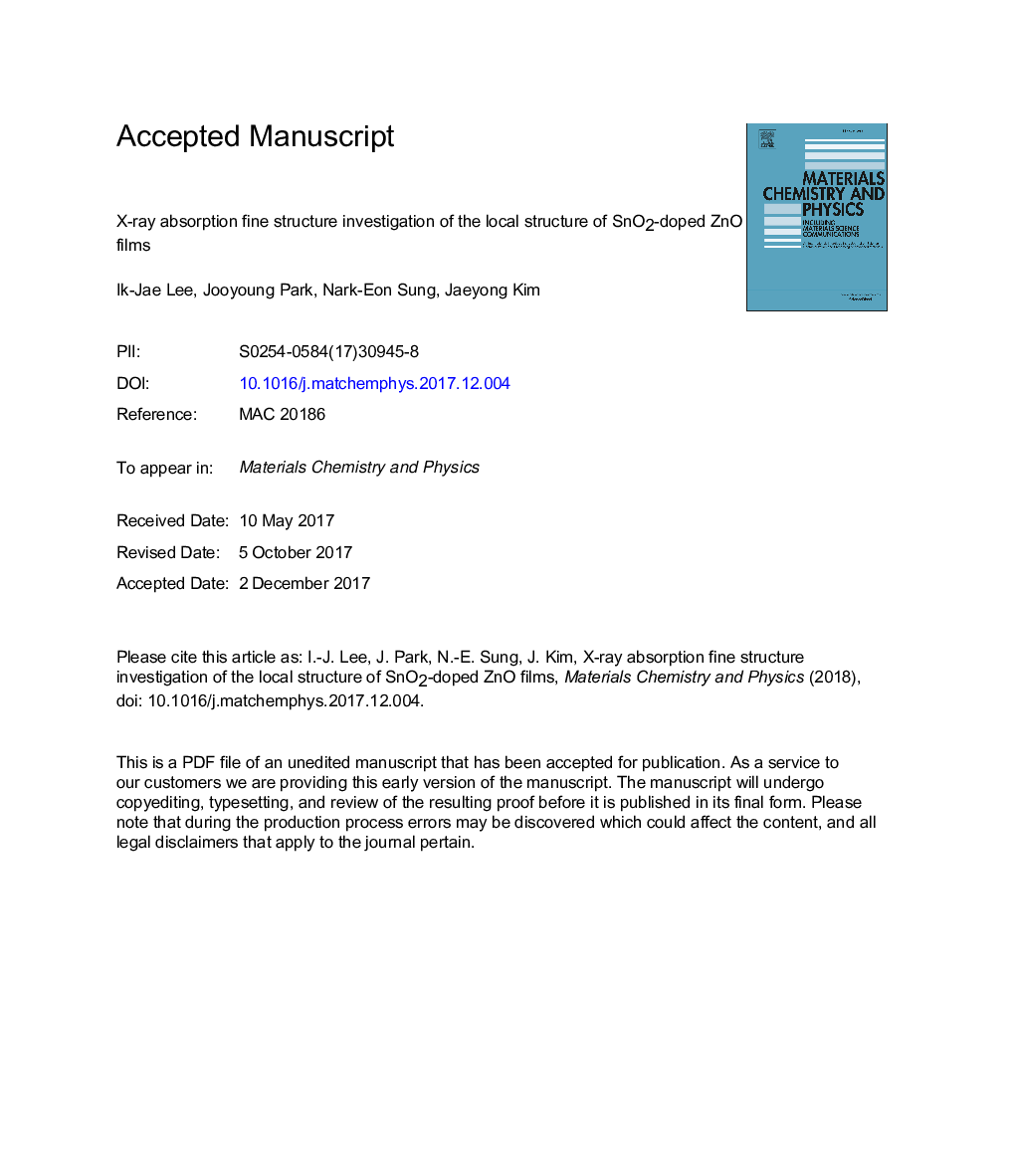| Article ID | Journal | Published Year | Pages | File Type |
|---|---|---|---|---|
| 7922121 | Materials Chemistry and Physics | 2018 | 25 Pages |
Abstract
Transparent conducting SnO2-doped ZnO (ZTO) films were deposited on quartz substrates at 350 °C from sputtering targets made with ZnO:SnO2 (molar ratios 100:0 to 70:30) by using a radio-frequency magnetron-sputtering system, and effects of SnO2 on changes of structure with ionic states and optical properties were investigated by analyzing data obtained using X-ray diffraction (XRD) and Zn K-edge X-ray absorption fine structure (XAFS) measurements. As SnO2 content [SnO2] increased, the surface of ZTO films became smooth as a consequence of decreased grain sizes to a few nanometers. 2θ angles of peak positions in XRD patterns remained near constant, which suggests that Sn ions replaced Zn from crystal sites. In X-ray absorption near-edge spectra (XANES) the Zn K-edge was dominated by the transition of Zn 1s core electrons into the unoccupied Zn 4p states of the conduction band. Combined results from XRD and XAFS suggest that replacing ZnO with SnO2 caused Sn4+ to displace Zn2+ from sites in the crystal. As [SnO2] increased from 0 to 30%, the resistivity of the ZTO films decreased significantly from 172 to 8.75 mΩ cm, and their average optical transmittance increased from 78 to 87% in the region(450 ⤠λ â¤Â 630 nm). The increased with further increase in [SnO2] attributed to the structural change to a nearamorphous phase.
Related Topics
Physical Sciences and Engineering
Materials Science
Electronic, Optical and Magnetic Materials
Authors
Ik-Jae Lee, Jooyoung Park, Nark-Eon Sung, Jaeyong Kim,
